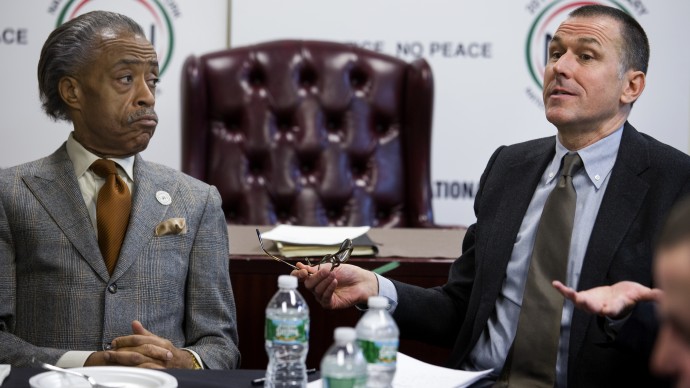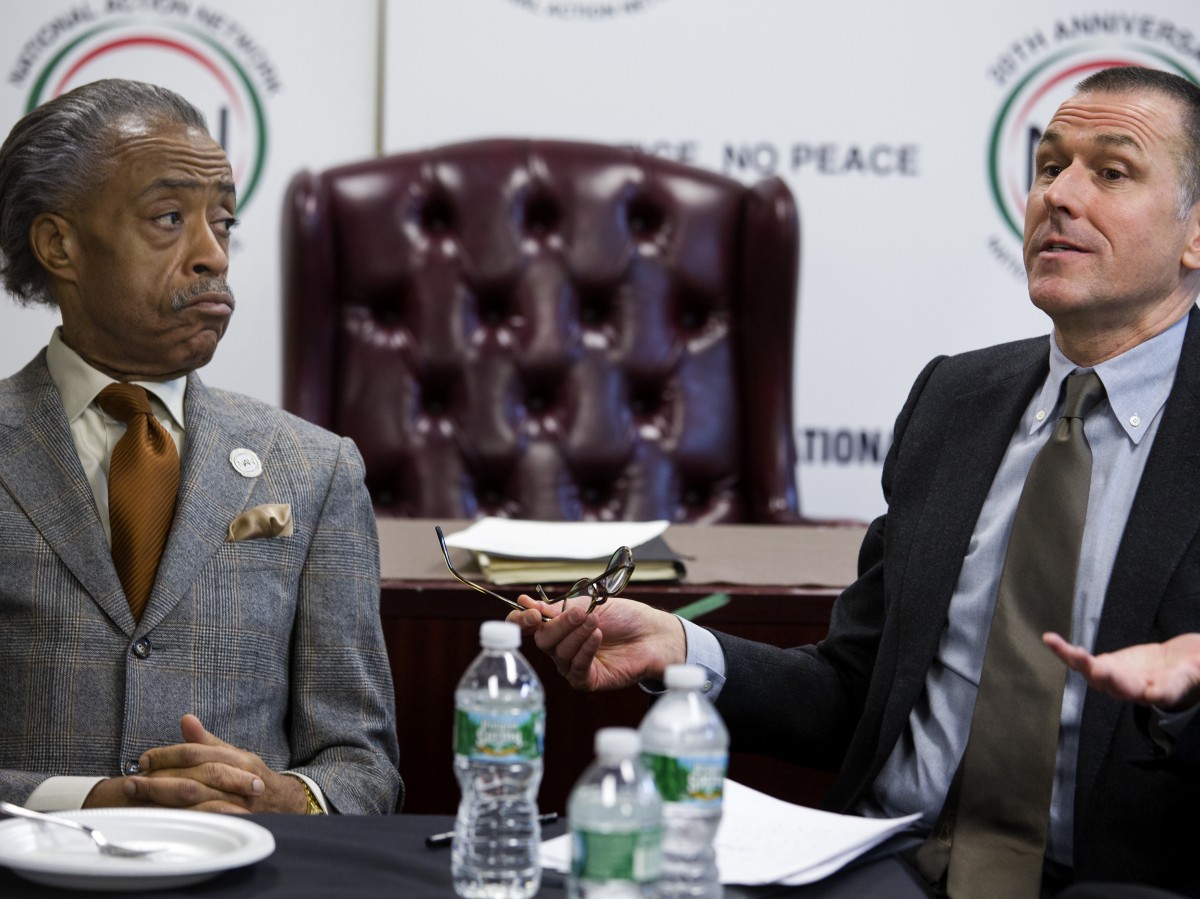
Kayla Phillips is a 21-year-old nursing student from Brooklyn. After receiving her tax refund, she decided to treat herself to a $2,500 Celine handbag from Barneys New York — one of New York City’s premier retailers. Phillips planned to buy the orange bag for a long time, and when she received the refund, she felt the timing was right.
Three blocks away from the store, after paying for the bag with her debit card, she was accosted and detained by four undercover New York Police Department officers. “There were three men and a woman,” she told the New York Daily News. “Two of them attacked me and pushed me against a wall, and the other two appeared in front of me, blocking the turnstile.” Phillip’s story is but one of many to attest to a phenomena being understood to be one of the most rampant and widespread style of racism to emerge in modern America.
“They were very rough,” said Phillips. “They kept asking me what I bought and saying, ‘Show us your card.’ I didn’t know what was happening.” Phillips recently opened up her Bank of America card and was still using her temporary ATM card. She had the permanent card with her, yet to be activated. “They kept asking how I could afford this expensive bag and why had I paid for it with a card with no name on it.”
Phillips has announced her intentions to sue the police department. She is not alone in her plight. In April, 19-year-old Trayon Christian — a student at New York City College of Technology — was also stopped for buying a $349 Salvatore Ferragamo belt with his debit card. Two male NYPD detectives stopped Christian, alleging that his debit card is fake. “They said my card wasn’t real, it was fake. They said someone at Barneys called to report it,” Christian said. He then was asked to show his ID and let them search his bag. Christian showed his school ID and driver’s license, he said. “The detectives were asking me, ‘How could you afford a belt like this? Where did you get this money from?’”
Christian was detained for two hours, he said, before the police released him with an apology. Barneys New York announced, via a Facebook post, that it had nothing to do with the arrest and that the police’s assertion that the store called in a complaint about Christian was false. Christian is suing both Barneys New York and the NYPD for an undisclosed amount.
The legacy of stop-and-frisk
Phillips’s and Christian’s stories can be seen from two equally disturbing perspectives. First, Christian and Phillips are but the latest examples of how New York City chooses to implement its “stop-and-frisk” policy. Despite a recent federal judge’s decision decrying the controversial procedure — in which the police supposedly stop and search suspicious individuals for weapons in order to stop the facilitation of a crime, but, in reality, resulted in more than 3.8 million stops over a ten-year period in which blacks and Latinos were disproportionately targeted and where only 0.2 percent of all stops actually found a gun — as controversial, is calling for the federal appeals court in Manhattan to delay implementation of the ruling.
The NYPD considers shoplifting — particularly in Manhattan — a high-profile crime. Considering the concentration of wealth in the area, the NYPD tends to focus additional manpower and resources in Manhattan. According to the NYPD, more than 75 percent of all crimes in the precincts where these incidents occurred are petit larcenies. In light of the police department still pursuing stop-and-frisk as valid policy, it is almost to be expected that the city’s policing policies extends to Park Avenue.
Rob Brown was an actor on the recently-cancelled HBO show “Treme.” On Friday, Brown told the Daily News that in June, he was “paraded” through a Manhattan Macy’s in handcuffs and detained for a hour for purchasing a $1,350 gold watch for his mother for her college graduation. Like Phillips and Christian, he was told that his card was fake. Macy’s, in 2005, paid $600,000 to settle allegations that many of its New York stores targeted blacks and latinos for scrutiny of theft.
Similarly to Christian, Macy’s denounced the idea that any of their employees were involved in the Brown case. Macy’s indicated that the store merely cooperated with the police’s request for a room in their building.
“You can’t let injustice roll like that,” Brown said, adding that this incident made him miss his mom’s college graduation. “I’ll never get that time back. My mother was walking across the stage looking for me.”
Do black people shoplift more? (No.)
This all begs the second — and more important — perspective: why are African Americans and Latinos being singled-out while shopping? For most people of black or Latino ancestry, retail discrimination has became such an ingrained fact of life that few actually acknowledge it verbally. Despite that, the constant stream of rolled eyes, brush-offs, ignored calls for help, consistent watching and general rudeness represents a large problem that many non-minorities are unaware of or incapable of accepting. From Oprah Winfrey to Forest Whitaker to the president himself, most African Americans have been subjected to the humility colloquially recognized as “shopping while black.”
“It’s one thing if you don’t understand. But don’t ever tell me it doesn’t happen to me,” said Natasha Eubanks, owner of the celebrity website theYBF.com, who shops often at high-end stores in New York City, to the San Francisco Gate. “You can’t assume it doesn’t happen just because it doesn’t happen to you.” Eubanks indicated that she had to deal with this type of treatment at least 20 times in New York City.
“It feels differently than when you go into a store and are treated properly.”
Yvonne Chan, a graduate student who once worked as a liquor store, admitted to having a warped perceptions of blacks when she was still a clerk. At the liquor store, in a predominately white Massachusetts town, a theft would occur every few months, with half of thieves being black. “You find yourself watching black people. (The stealing) only happens once in a while, but it changes your perception,” Chan said. “Like it or not, I’m going to have a preconceived notion of races from my experiences. As much as I would like to force my brain not to think like that and put everyone on an even playing field, stereotypes play a role in our society.. we skew the view of people as individuals.”
Statistically, African Americans are no more likely to shoplift than whites. “[Although] shopkeepers often are quick to blame juveniles for missing items, the UF study found shoplifters were most commonly between the ages of 35 and 54,” read a finding report from a 2005 University of Florida research program. “These middle-aged adults, most of them gainfully employed, were ‘primary household shoppers’ who occasionally stole to acquire goods whose cost stretched beyond their household budgets.”
“Overall, blacks and Hispanics were no more likely than whites to steal merchandise. However, when race and gender were examined by subcategory, Hispanic females stole the most, shoplifting at more than seven times the rate of white females, he said.”
African-American teenagers are arrested the most for shoplifting because that who receives the most attention from clerks and the police. This attention is unfounded and it is racially motivated.
“In major cities like New York, blacks and Latinos not only worry about being ‘stopped-and-frisked’ by police, but they also fear the embarrassment of being ‘shopped-and-frisked’ in retail stores,” the Rev. Al Sharpton wrote for the New York Daily News. “In other words, minorities are sent a shameful message that no matter what they are doing, they are guilty until proven innocent.”
“Imagine walking into a store, finding something you like and making the purchase only to be stopped, interrogated, searched, handcuffed and locked in a cell simply because someone didn’t believe you could afford the item.”
Sharpton and other New York City civil rights leaders are meeting with the executives of the city’s retail sector towards finding a solution to retail discrimination and New York State Attorney General have launched investigations into both Macy’s and Barney New York into access discrimination. “”Attorney General Schneiderman is committed to ensuring that all New York residents are afforded equal protection under the law. The alleged repeated conduct of your employees raises troubling questions about your company’s commitment to that ideal, and the company’s compliance with state and local civil rights laws,” Kristen Clarke, who heads the attorney general’s civil rights bureau, wrote in the letters.


